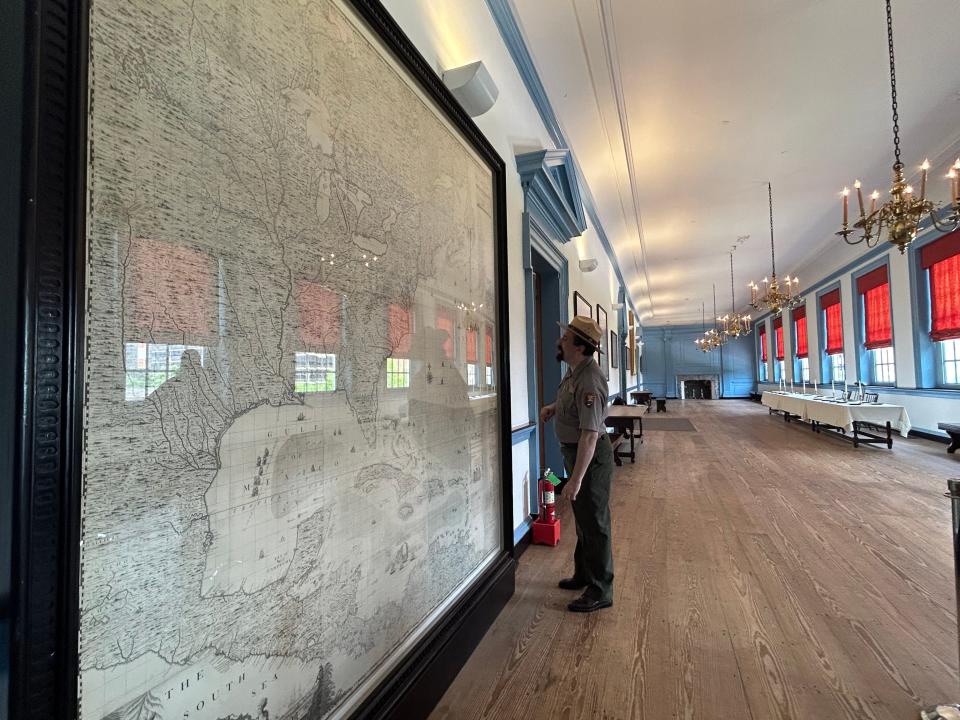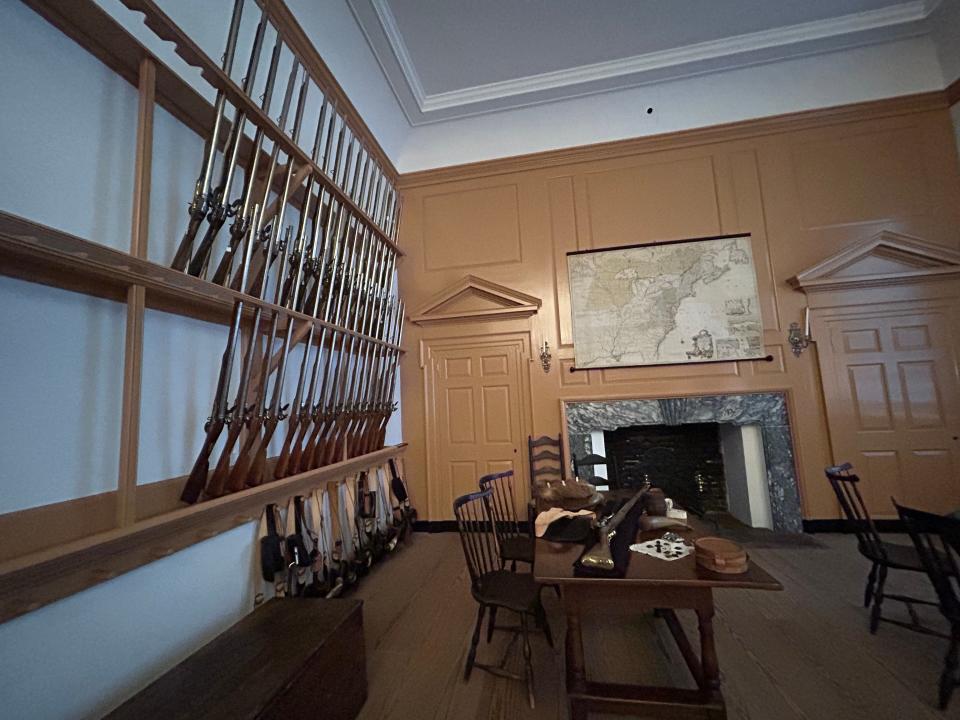Tunis Cole was obviously proud of his service in the war and his role in the fight for American freedom.
And the Revolutionary War veteran hoped that in his old age, he could have some measure of financial security. So Cole wrote to the U.S. government to ask for a pension made possible by a series of laws passed in the 1800s.
“…That having been encouraged to do so, (Cole) prays Government to look favorably upon his claims and grant him something to relieve his wants and give him comfort in this Autumn of his Earthly existence, that he may close his eyes in gratitude upon a nation upon whose altar of Freedom he has devoted many of the best years of his youth…”
Cole’s 1848 pension application was written, like thousands of other veterans’ applications, by hand – sometimes by the vets themselves, sometimes by their widows, sometimes by friends who helped the elderly farmers and tradesmen who’d taken up arms for their new country.
Because the records of the day weren’t always reliable or consistent, many veterans had to include details to prove their service: their units, their deployments and leaves, their comrades in arms and commanding officers, the places they fought, even the horrors they witnessed.
Now, almost 250 years later, Americans are hearing a new call to arms. Citizen archivists are needed to transcribe original pension applications from the nation’s first veterans into a massive database − and help reveal their extraordinary and untold stories.

Who are citizen archivists? How this history fan gets to read JFK’s telegrams, Titanic insurance claims, UFO docs
‘America’s first veterans’ and the country’s 250th birthday
The collaborative effort by the National Park Service and the National Archives targets the roughly 2 million pages of handwritten pension applications from the Revolutionary War that are already scanned and digitized. Organizers want a database than can be searched by battles, by names, by dates and more.
The pensioners’ applications can be as short as a couple of pages or as long as 100 pages, Suzanne Isaacs and Nancy Sullivan, community managers with the National Archives, told USA TODAY. There are about 83,000 of them, Isaacs said, and the NPS and Archives are really only at the start of what will likely be a multi-year project.
.So far, according to Jason Wickersty of the National Park Service, 52,360 pages have been transcribed, and 1,602 pensions completed.
The goal? To have as many records transcribed by citizen volunteers as possible ahead of the 250th anniversary of the Declaration of Independence in 2026 so that National Park Service guides can incorporate some of the stories into their tours of historic sites and so that historians and genealogists can have a searchable database of information.


“It’s a huge project,” Isaacs said. “But these are America’s first veterans,” men who can offer a glimpse into everyday conditions. Their widows’ accounts also provide a look at life on the homefront, Sullivan said. Some vets couldn’t write, so they dictated their stories to others, signing the applications with an “X” or other mark.
Black soldiers and Native Americans also served, and their accounts will help the Park Service tell a far more complete story, Wisckersty said.
Isaacs and Sullivan, archivists but not historians, said they’ve learned a lot, even in the project’s nascent stage.
‘A particularly revealing snapshot’ of soldiers’ lives
Wickersty is the National Park Service’s liaison to the pension project, and one of the people who came up with the idea to enlist volunteers to transcribe accounts. A New Jersey resident who originally had an interest in the Civil War, he realized he was surrounded by Revolutionary War history. He turned his attention to that war and, working with fellow NPS coordinators Joanne Blacoe and Cris Constantine, as well as Isaacs and Sullivan, started transcribing.
After the War of 1812, a crisis was brewing among America’s first veterans, and many of them were sliding into poverty as they aged, he said. President James Monroe, a veteran himself, was behind the first service-based pension in 1818. Four major pension acts would be passed from 1818 to 1836 to expand eligibility to more veterans and their survivors. After an initial lump sum, enlisted soldiers received $96 annually and officers, $240.
Pensions were meant for veterans in need, and in 1820 pension rolls were voided to keep out wealthy vets. Within months, most veterans reapplied but had to provide proof of their financial situations, so the second round of applications included not just the vets’ experiences during the war, they also included lists of assets (down to individual pieces of furniture and housewares in some cases), family members and dependents, information about their health and more.


“This is a particularly revealing snapshot of America’s first veterans as they aged into their 60s, how hard the service was on their bodies, and how little they improved in their station,” Wickersty said. “Most veterans were racked by rheumatism, and several owned nothing but the clothes they wore and a single smoking pipe.”
An 1832 law opened eligibility to militia members, not just those who had served in the Continental Army. But since militias didn’t usually issue discharge papers, veterans had to give oral testimony and provide witnesses, adding even more detail to their accounts. Pensioners were paid on a pro-rated basis depending on their rank and time of service, anywhere from $20 for a private who had served six months to the highest paid pensioner, New Jersey’s William Gamble, a major who was awarded $600 per year.
The 1832 cohort of pensioners, Wickersty said, allows “the story of the American Revolution to reach beyond the places where it was fought, and shows just how mobile the Revolutionary generation was as the United States expanded westward.”
‘Paperwork done in their own words’
Isaacs said veterans without discharge papers – whether they were lost or never existed – provide the most detail. “It’s a lot, and it’s paperwork done in their own words. They’ll drop names, talk about seeing General Washington or Lafayette, talk about what they saw.”
Isaac Quigley was in Burlington County, New Jersey, in 1778 when he served. But by the time he applied for a pension in the 1840s, he lived in Michigan. Some veterans moved as far west as Missouri and Mississippi.
Later amendments to the law expanded widows’ eligibility, too, so applications continued: One widow, Sarah Shephard, was still due money when she died in 1863. Four years later her son Ezekiel, an officer in Union regiment in West Virginia, hired a lawyer to claim the money, and his lawyer had to show that neither Ezekiel nor his mother had supported the Confederacy.
Sarah Martin, living on the front lines in Middlesex County, New Jersey, while her husband served, wrote about British soldiers bursting into her home, threatening to shoot her and her young son if she didn’t feed them. She wrote about having her house plundered by British troops multiple times during the war.
“This was life for her, living in terror for the knock on the door,” Wickersty said. “Is it going to be her husband coming home, or someone threatening to burn her house down and kill her children?”


Some widows, Sullivan said, weren’t sure of their exact wedding dates or didn’t have access to their church’s records, because they’d moved away or their clergyman died, among other reasons. So they’d tear out pages from their family Bibles, often the only written record many families kept of their lineage, and include it with their application.
Wickersty transcribed one veteran’s record that highlighted a little-known bit of history from one of the United States’ most famous historical sites: Samuel Waples was captured during the Battle of Germantown and held prisoner in a long room on the second floor of Independence Hall – then the Pennsylvania Statehouse, site of the signing of the Declaration of Independence – during the 1777 British occupation of Philadelphia. (He didn’t remain there long, escaping soon after his capture.)
Those are just some of the stories they’re uncovering, and they hope more volunteer transcribers and citizen archivists discover more of these types of narratives, the ones not always heard from generals or historians.
“It’s a really cool thing to have people be part of,” Wickersty said. “How often can you say you worked on something that’s part of National Archives?”
Contact Phaedra Trethan by email at [email protected], on X (formerly Twitter) @wordsbyphaedra, or on Threads @by_phaedra
This article originally appeared on USA TODAY: Revolutionary War veterans’ stories revealed in new pension project
Source Agencies


